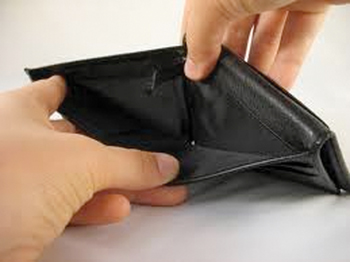Buyers Remorse
Thursday Jan. 31st, 2013
Buyers Remorse —That bitter regret or guilt that you made a bad decision. We’ve all had it at one time or another. We bought something and then comes that nagging feeling. Did I do the right thing? Should I have gotten the larger one? Smaller one? For most of us, it’s the most natural feeling in the world. You leave a restaurant wishing you had ordered the fish. You talk to someone at work that got a better deal than you on the same product. Price has no bearing on how we feel after the purchase. We can feel just as bad if it’s $10.00 or $10,000.00.
One common reason for buyers remorse is having been “burned” at some other business. Listen to questions your customers ask and look for red flags.
We All Need Conformation
My wife and I both experienced buyer’s remorse in our move to Montana. Are we doing the right thing? Is Montana the right place? But, as we told more and more of our friends about the upcoming move, they were all so envious. “Wow, Montana, you are so lucky.” Once we had some conformation from others, the buyer’s remorse disappeared. I know there’s no way you can control what your customers are going to hear about their purchase from others, but you can control what they hear from you.
Cement The Sale
The most powerful tool for preventing buyer’s remorse is your personal, sincere conformation, at the right time, that your customer has done the right thing. Here are a couple of points to remember to make that task easier and more effective.
Do not begin the conformation part of the sale until after the money or check has changed hands. If you confirm too quickly, the customer will see it as closing pressure and it really has no power. It’s lip service.
Always use the customer’s name. Get their name off their check or credit card if you haven’t already gotten it. A person’s name is personal; “Sir” or “Miss” is not.
Personalize your comments by using “I” and “you”. It’s not the store that’s thanking the customer; it’s you the person.
Confirm With Benefits.
Don’t just confirm the purchase but reinforce the decision with the benefits of the product that makes it a good decision.
Another positive reinforcement is calling the customer on the evening of the sale or the following day. This makes even more sense if the customer is being asked to wait for a special order. Special order merchandise gives more time for buyer’s remorse to set in. Your call can often eliminate buyer’s remorse before it gets a foothold in the customers mind.
Remember, as I’ve said so many times, customers make decisions based on emotion, not on logic. Buyer’s remorse is an emotional response to a purchase. Use positive reinforcement to keep the deal closed.
When the sale is finally made the customers are in a very suggestive state of mind. They will probably do what ever you ask them to. It is a good idea not to say, “You shouldn’t have any problems with your new widget, but if you do please call me.” If you say this, expect a problem and a call. You have planted the seed to look for problems. Service or how problems are addressed should be covered long before the sale is finalized. Instead something like, “I know you must be anxious to get home and start using your new widget right away” would be better.
Ask for a favor. “The next time you’re visiting downtown would you stop by and let me know how your husband is enjoying his new widget?” “I’d love to hear.” When you do this, you do two things.
One, you again reinforce that the customer made the right choice and you are looking forward to seeing them again. Two, if there is a problem you have opened the door that you want to hear from them again, even though you didn’t plant the problem seed. Buyer’s remorse can be overcome with just a little common sense and good customer service.
Check out Tom’s Weekly Radio show at http://kmmsam.com Every Saturday Noon to 2 PM Mountain Time – Follow Tom on Facebook at facebook.com/smalltownmarketing and on Twitter @smalltownmarket
| Tweet |